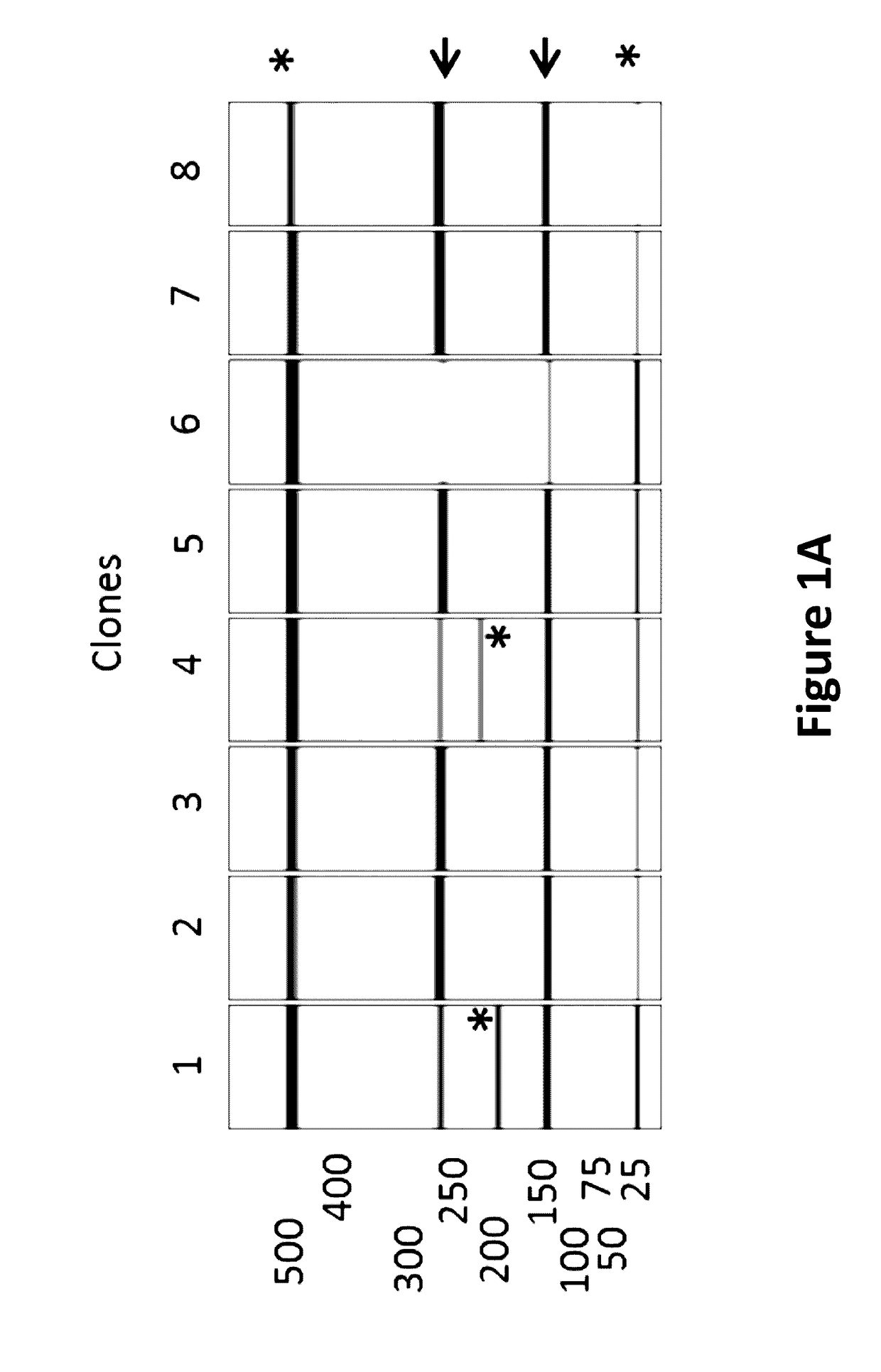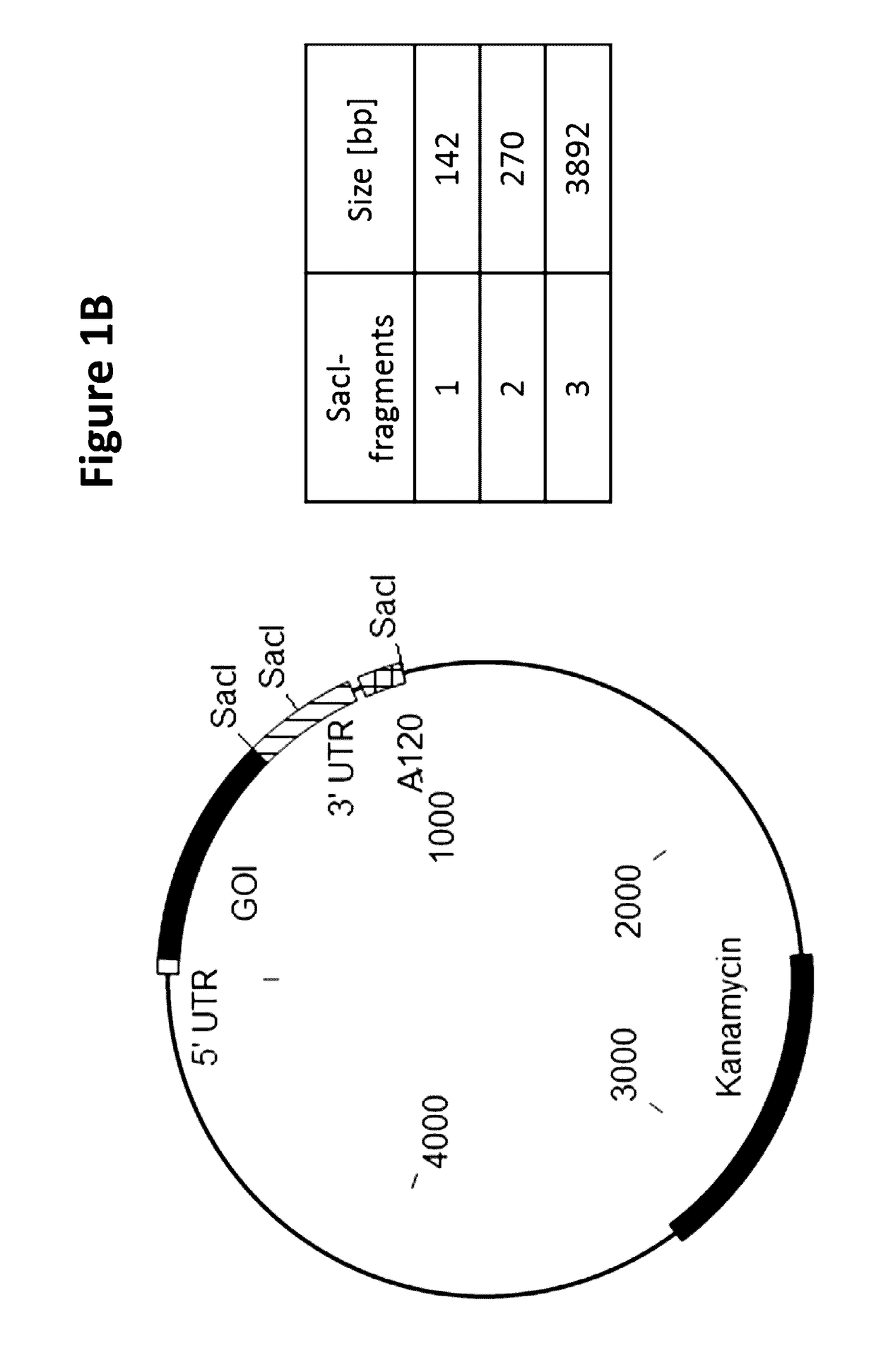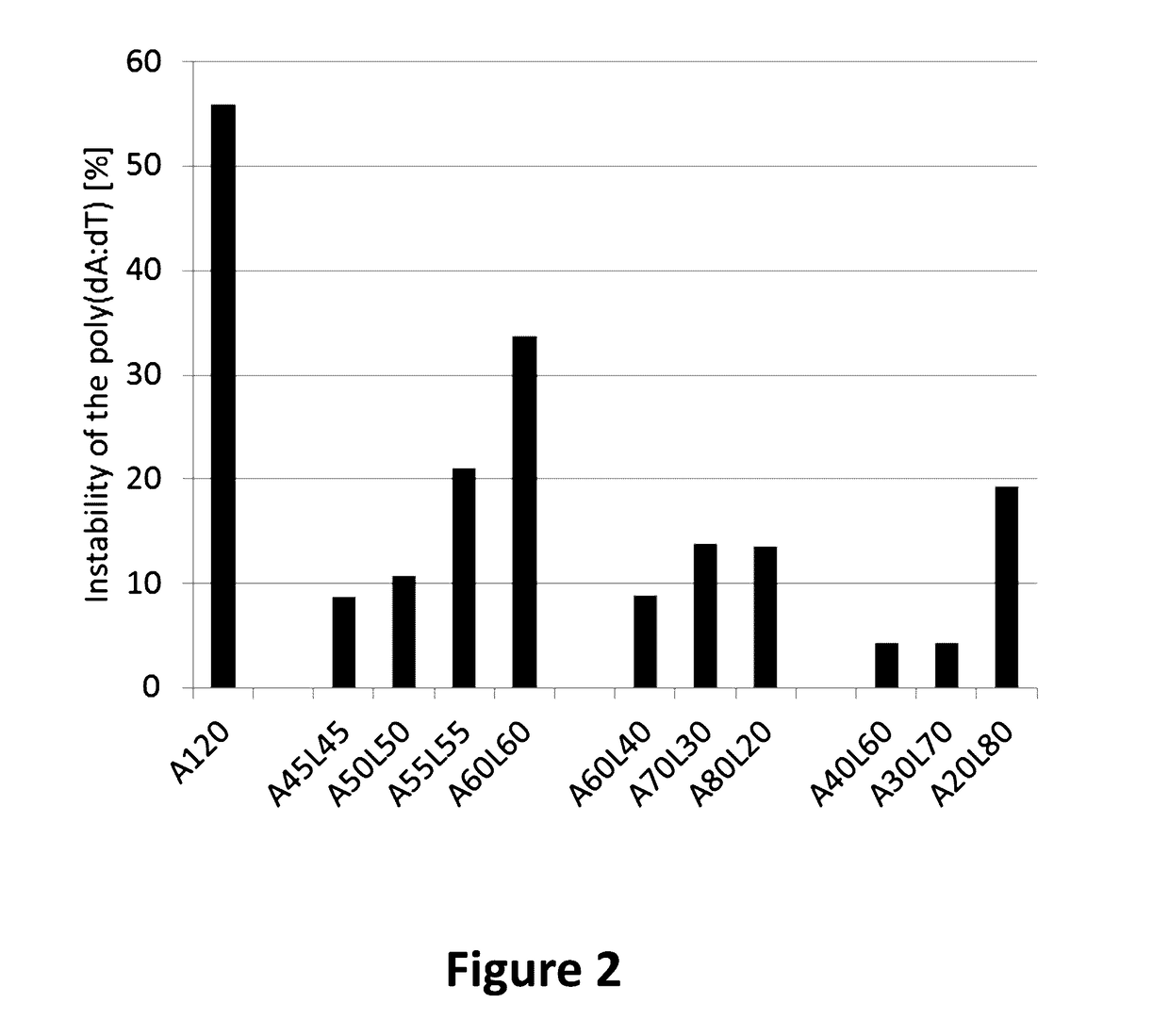Stabilization of poly(a) sequence encoding DNA sequences
a technology of dna sequence and poly(a) sequence, which is applied in the direction of dna/rna vaccination, genetic material ingredients, antibody medical ingredients, etc., can solve the problems of reducing the translational efficiency and stability of in vitro transcribed rna, and the use of rna for clinical applications is greatly restricted, so as to reduce production costs and increase expression of recombinant proteins
- Summary
- Abstract
- Description
- Claims
- Application Information
AI Technical Summary
Benefits of technology
Problems solved by technology
Method used
Image
Examples
example 1
Semi-Automated Screen on Poly(dA:dT) Stability
[0191]A semi-automated process was established to screen a large number of E. coli clones for the integrity of the critical poly(dA:dT) sequence region encoded on the plasmid carried by individual E. coli clones. For screening of one specific poly(dA:dT) construct, 96 E. coli clones were inoculated and incubated in a 96 well plate at 37° C. Cells were harvested by centrifugation and plasmids were purified on a 96 well plate vacuum-based purification platform. The tested plasmid DNAs contained three SacI restriction sites, cleaving the vector twice in the 3-UTR (3′-untranslated region) and once downstream of the poly(dA:dT) sequence. SacI restriction resulted always in 2 specific bands of 142 bp and 270 bp in size which allowed the calculation of the length of the poly(dA:dT). The third band represented the vector backbone and the antigen with a size depending on the inserted antigen (GOI=gene of interest). An exemplary vector map with th...
example 2
Stability Testing of Different Poly(dA:dT) Constructs
[0193]As a model antigen the SIINFEKL peptide (SEQ ID NO: 1) was chosen because in previous experiments the poly(dA:dT) instability of this antigen was reproducibly determined between 50-60% and provides therefore a large experimental window for stability testing. 10 different poly(dA:dT) constructs were designed and fused directly behind the SIINFEKL peptide (SEQ ID NO: 1). A 10 nucleotide linker (L) was inserted in the poly(dA:dT) stretch in different positions of the poly(dA:dT) sequence. The linker sequence (GCATATGACT (SEQ ID NO: 2)) was chosen in a way to contain a balanced contribution of all 4 nucleotides (2×G, 2×C, 3×T and 3×A). 4 constructs were designed with the linker in the middle of the poly(dA:dT) starting with 45 adenosine residues (45×A) on each side (A45L45) with a step-wise increase of 5×A both sides ending with 60×A on each side of the linker (A50L50, A55L55 and A60L60, respectively). The 6 remaining constructs...
example 3
Stability of Poly(dA:dT) Constructs in Different E. Coli Strains
[0194]In further experiments the specificity and functionality of the superior stability of the constructs A30L70 and A40L60 was tested. The possibility that the observed results of the stability testing are restricted to the tested E. coli strain TOP10 was evaluated by including two other E. coli strains in the testing. Testing for A30L70 and A40L60 was repeated with DH5α, XL1-blue and TOP10 as control respectively. These strains were chosen as i) having a high genetic diversity (see Table 2) and ii) representing E. coli strains which are widely used in molecular biology laboratories.
[0195]Instability of the A120 was measured for DH5 at 42% and for XL1-blue at 61.8% and was therefore considered to be comparable to the instability detected for E. coli TOP10 strain (see FIG. 3). Both, A30L70 and A40L60 showed an instability between 3-4%, only for A40L60 in TOP10 instability was slightly elevated to 6.8%. Testing 3 differ...
PUM
| Property | Measurement | Unit |
|---|---|---|
| Current | aaaaa | aaaaa |
| Length | aaaaa | aaaaa |
Abstract
Description
Claims
Application Information
 Login to View More
Login to View More - R&D
- Intellectual Property
- Life Sciences
- Materials
- Tech Scout
- Unparalleled Data Quality
- Higher Quality Content
- 60% Fewer Hallucinations
Browse by: Latest US Patents, China's latest patents, Technical Efficacy Thesaurus, Application Domain, Technology Topic, Popular Technical Reports.
© 2025 PatSnap. All rights reserved.Legal|Privacy policy|Modern Slavery Act Transparency Statement|Sitemap|About US| Contact US: help@patsnap.com



